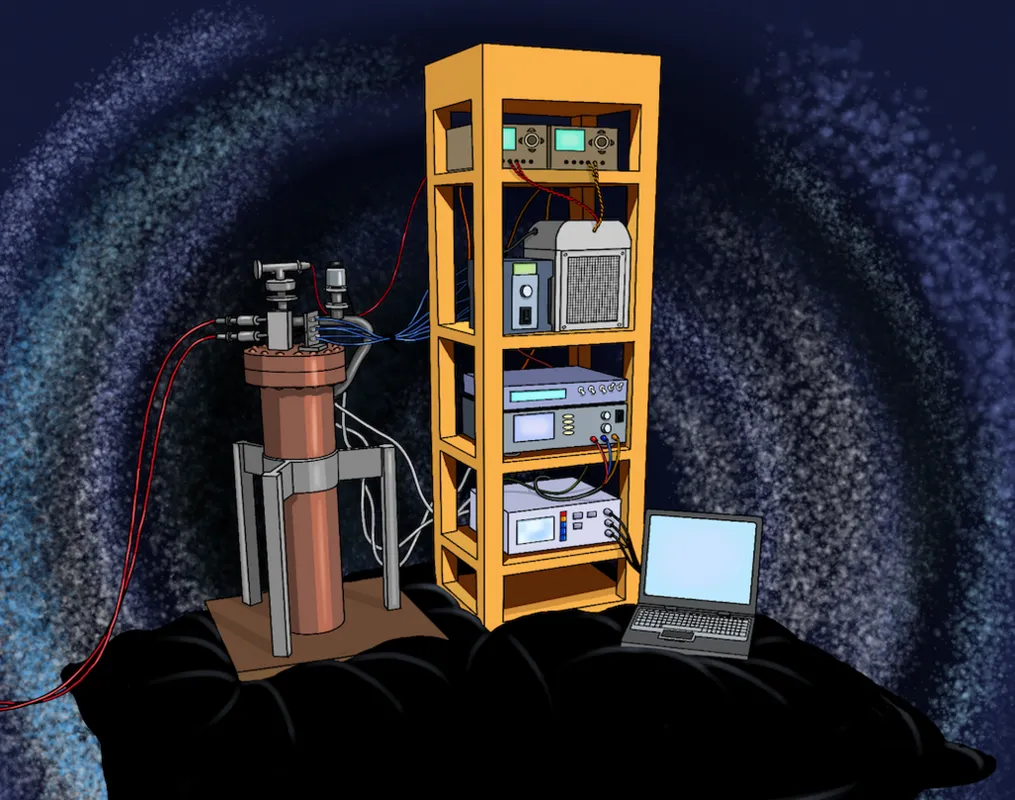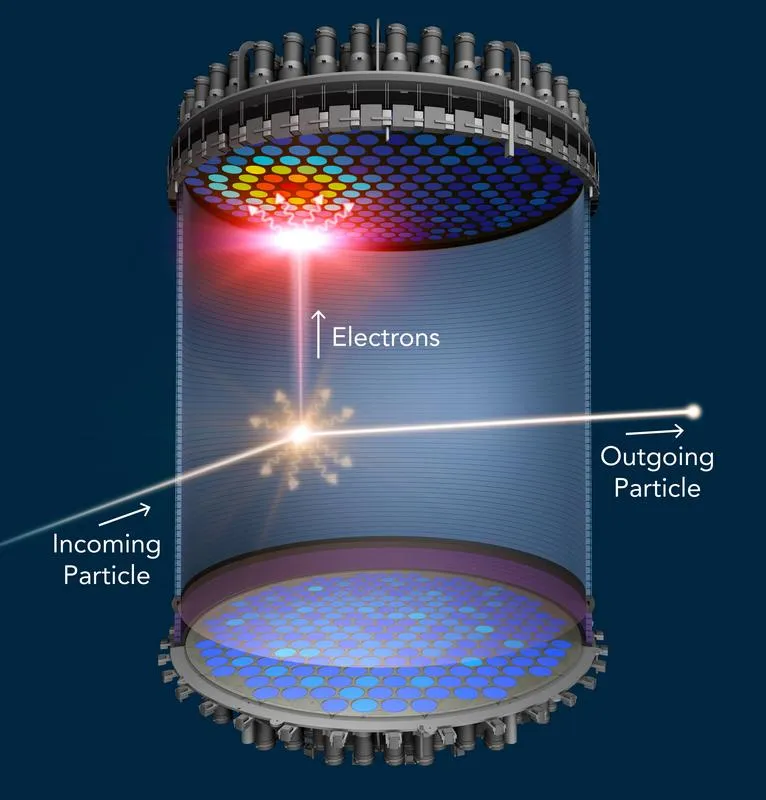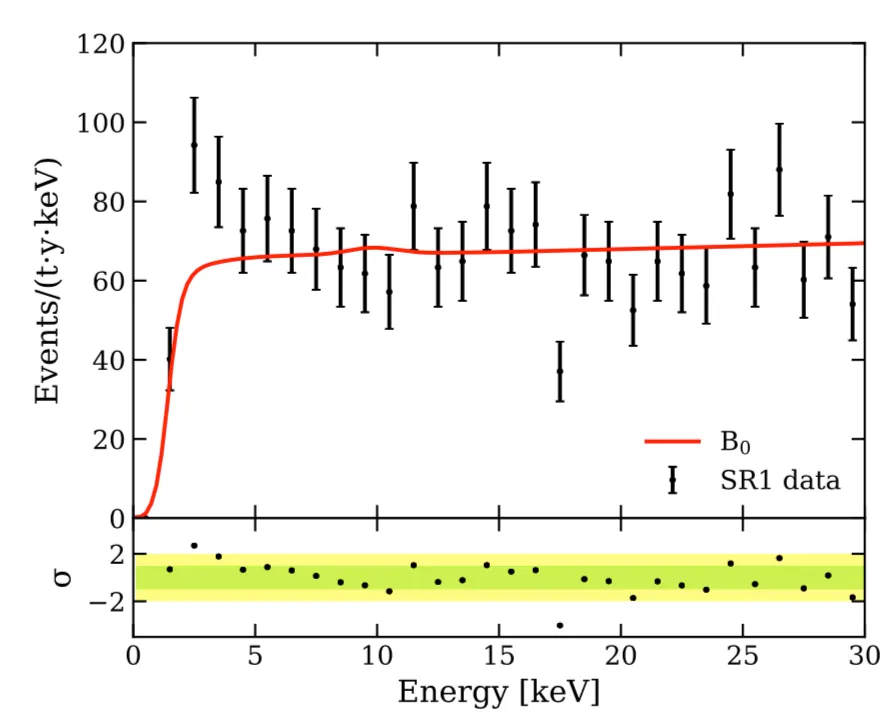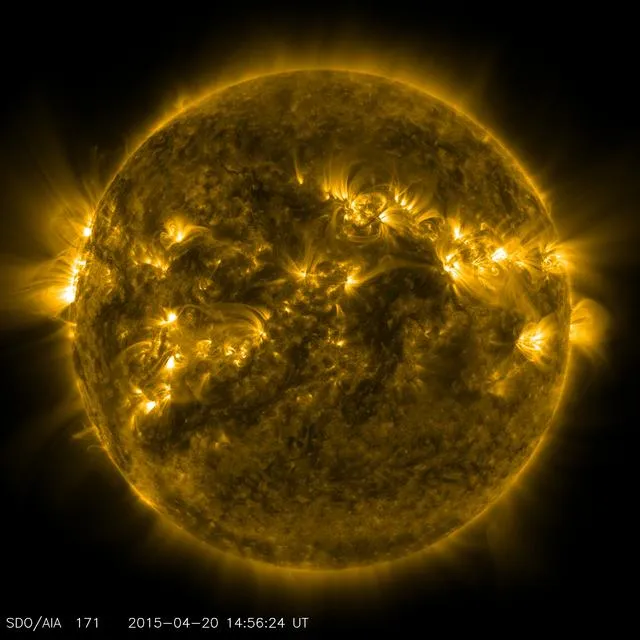Last Wednesday the XENON1T dark matter experiment, located in Gran Sasso in Italy, released new results that shook the high-energy physics community quite a bit: An unexplained signal was seen in data. I feel that I should share the excitement about this with this blog. But let's proceed step by step.
In the rest of this post, I start by briefly explaining how the XENON1T experiment works and how it has been designed to probe dark matter. I then detail the results of last Wednesday, and emphasise the difference between a hint for a new phenomenon (which is what we have here) and a discovery.
Finally, I provide a few potential explanations for the observation. This will by far not be an extensive review, as new scientific articles appear on a daily basis.

[Credits: @pab.ink]
The XENON1T experiment in a nutshell
Dark matter is indirectly evidenced by a large set of observations. As a consequence, there is a huge experimental effort aiming at its direct detection on Earth. This relies on two principles.

First, dark matter is generally very weakly interacting with normal matter. Interactions between dark and visible matter are therefore rare, but happen.
Next, there is a dark matter wind blowing on the planet so that dark matter particles could go through any detector located on Earth.
However, recording such an event requires dark matter not only to go through the detector but also to interact inside it. Due to the rarity of the dark matter interactions, this happens only occasionally. Nevertheless, with a large detector and some patience, we may see it.
Let's apply this to the XENON1T detector, that is made of a huge quantity of liquid Xenon surrounded by numerous sensors.
When a dark matter particle hits one of the Xenon nuclei making the detector, this nucleus recoils. By recording and analysing such a recoil, we can then conclude about what happened (dark matter or background).
This however requires dark matter to be energetic enough to trigger the nuclear recoil. This is why for light dark matter, one focuses instead on the recoil of the electrons making the detector. Electronic recoils indeed require less energy.
Measuring electronic recoils with XENON1T
The results announced last Wednesday concern those electronic recoils and the appearance of an excess in data. This is illustrated by the figure below, which includes all data taken by XENON1T in the 2016-2018 period.

[Credits: arxiv]
The figure depicts the rate of occurrence of events featuring a given electronic recoil as a function of the recoil energy, for low-energy recoils (between 0 and 30 keV). The red curve represents the background, originating mainly from the decay of heavy elements present in the detector (lead, krypton, some Xenon isotopes, etc.). The black points consist of data.
The interesting area lies between 1 and 7 keV, i.e. the first 7 bins. Despite the large error bars, a small excess can be noticed. In that region, 232 ± 15 background events are expected, which contrasts with the 285 observed events. Even after including the error bars, those two numbers are in tension.
The significance of the excess is 3.5σ. This means that we have 1 chance in about 2,000 that the observed peak corresponds to an unfortunate (but possible) fluctuation in the background. This is what we call a hint for something new in our jargon.
In order to conclude about a potential discovery, this is not sufficient. We need a significance of 5σ, which would reduce the probability of a fluke in the background to 1 chance in about 1,750,000.
Getting there would require a significant reduction of the error bars, which will be possible with the future upgrade of XENON1T into XENONnT. XENONnT is indeed expected to allow for a better control of the background, and involves a three times larger detector.
While waiting for a confirmation (or not) of the excess, it is important to get handles on what it could be.
Some interpretations
We can start by assuming that the excess is associated with a flux of new particles that hit the detector and induce the observed electronic recoils. The energy regime of the excess makes us naturally thinking about something light that could come from the Sun. Solar axions are the best candidates in this context.
Axions were initially proposed to solve the so-called strong CP problem of the Standard Model. Later on, more general axion models were built, with properties that are more tuneable. However, tuning the axion properties such that the excess is explained leads to tensions with astrophysics data.
 [Credits: NASA/SDO ]
[Credits: NASA/SDO ] Another possibility could involve neutrinos, but with properties different from those predicted by the Standard Model.
Neutrinos being massive, they have a magnetic moment. However, by postulating the existence of some physics beyond the Standard Model, this moment could be larger than expected.
Tuning this moment accordingly, the excess can be fitted. However, once again, astrophysics data leads to tensions.
In the meantime, a few theoretical articles appeared online (about 10 of them just today), and many more are expected to come. So far, the large majority of those articles feature the idea of a dark matter contribution as a source for the excess.
However, one should also keep in mind a less appealing possibility. The excess could come from some background mis-modelling. The XENON1T collaboration mentioned a tritium contribution that has been ignored so far. There is however no proof (yet) that any tritium was present in the detector.
Summary - a hint for new physics at XENON1T
The XENON1T dark matter experiment consists in a shielded tank of liquid Xenon surrounded by cameras and sensors. Once in a while, a dark matter particle could enter the detector and hit one of its constituents. The associated recoil is then recorded and studied.
Last week, the XENON1T collaboration released results concerning the electronic recoils recorded by the detector between 2016 and 2018. They feature a small excess, with only 1 chance in 2,000 that it corresponds to a background fluke. We may therefore be in presence of a hint of something new (solar axion, dark matter, non-standard neutrino interaction, etc.). It is however still too early to claim we have discovered something new in (astro)particle physics.
Personally, I hesitate to start working on this. While there are more and more articles appearing day after day, many of them are built on the same core idea. Therefore, except if I find a totally new idea to explore (so that we could actually learn something new), the chances of beginning to chase that ambulance myself are pretty low.
The future will tell us more... Stay tuned as we say!
PS: This article has been formatted for the STEMsocial front-end. Please see here for a better reading.
